From July until the end of September, CrossFit Prototype will be posting a blog per week as part of our Accessory Series. These blog posts will review 1 of the 13 CFP foundational movements (Air Squat, Back Squat, Front Squat, Deadlift, Kettlebell Swing, Pull-Up, Overhead Press, Push Press, Push Jerk, Clean, Snatch & Rowing) and provide tips on accessory exercises to help improve that area of your CrossFit game.
By Jessica Steurer (CF, L1)
The push press is one of the nine foundational movements preformed in CrossFit. It is a compound exercise, meaning it involves the movement of multiple joints. The main muscles worked are your shoulders and triceps. Working at the push press will translate over into perfecting other exercises in CrossFit such as handstand push-ups.
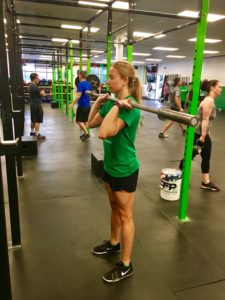
The movement begins with a vertical dip of the torso followed by a rapid extension of the hips that add velocity to the movement. The hips begin at hip width stance, elbows are in front of the bar, the bar rests on the shoulders and the torso goes straight down (see picture below), finally hips and legs extend then press the bar overhead at complete hip, knee, and arm extension.
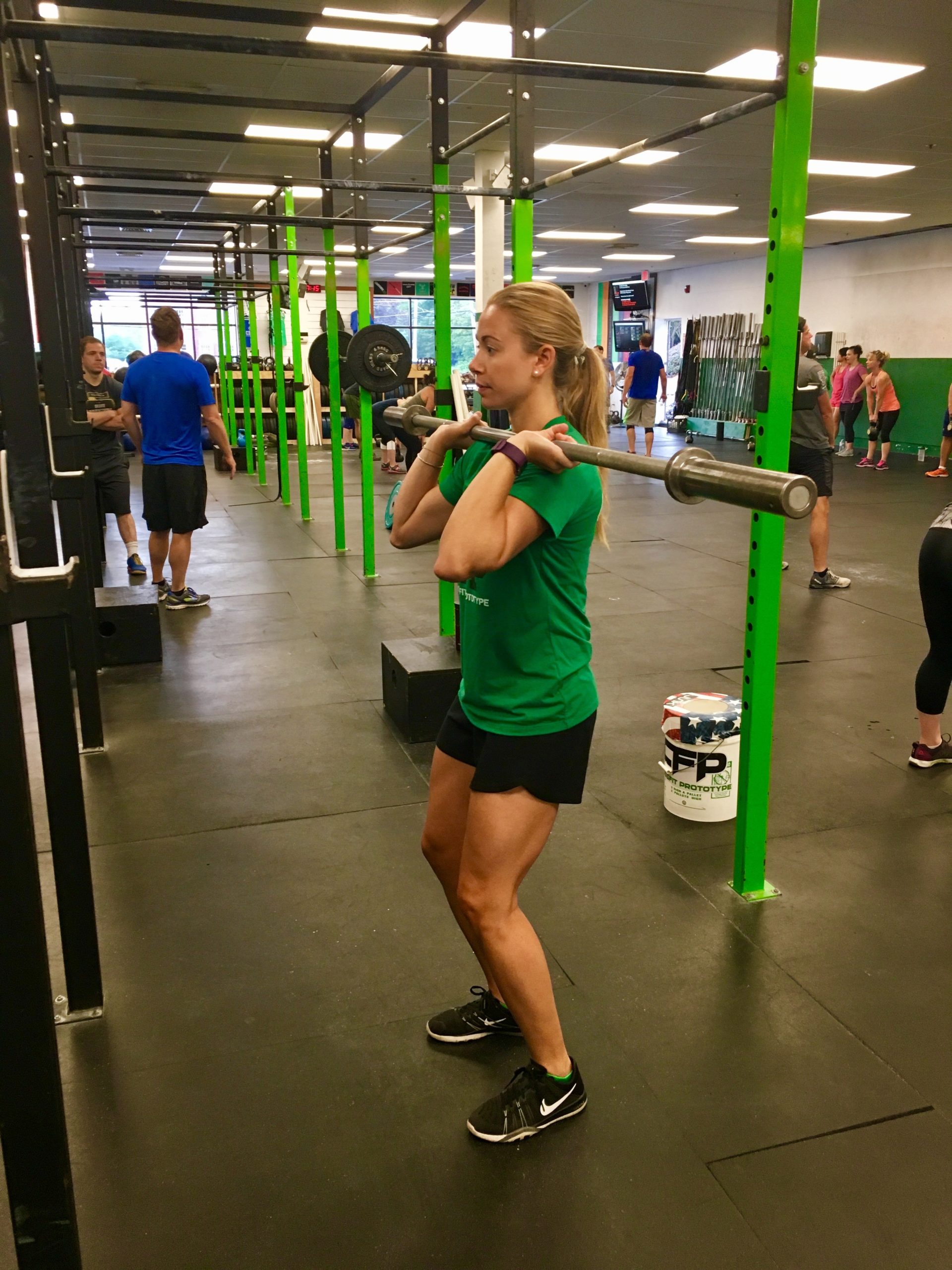
The push press is a great exercise but you must know some tips:
1. Start with a proper press grip, hold the bar tight across the shoulders
2. Keep the drive in extension close to your body, as if a PVC was placed in front of you
3. Always engage the core, keep the abdominals and back tight throughout the entire lift without bending in the lower back!
Common Faults of the Push Press
1. Loosing neutral lumbar spine; sticking the butt out
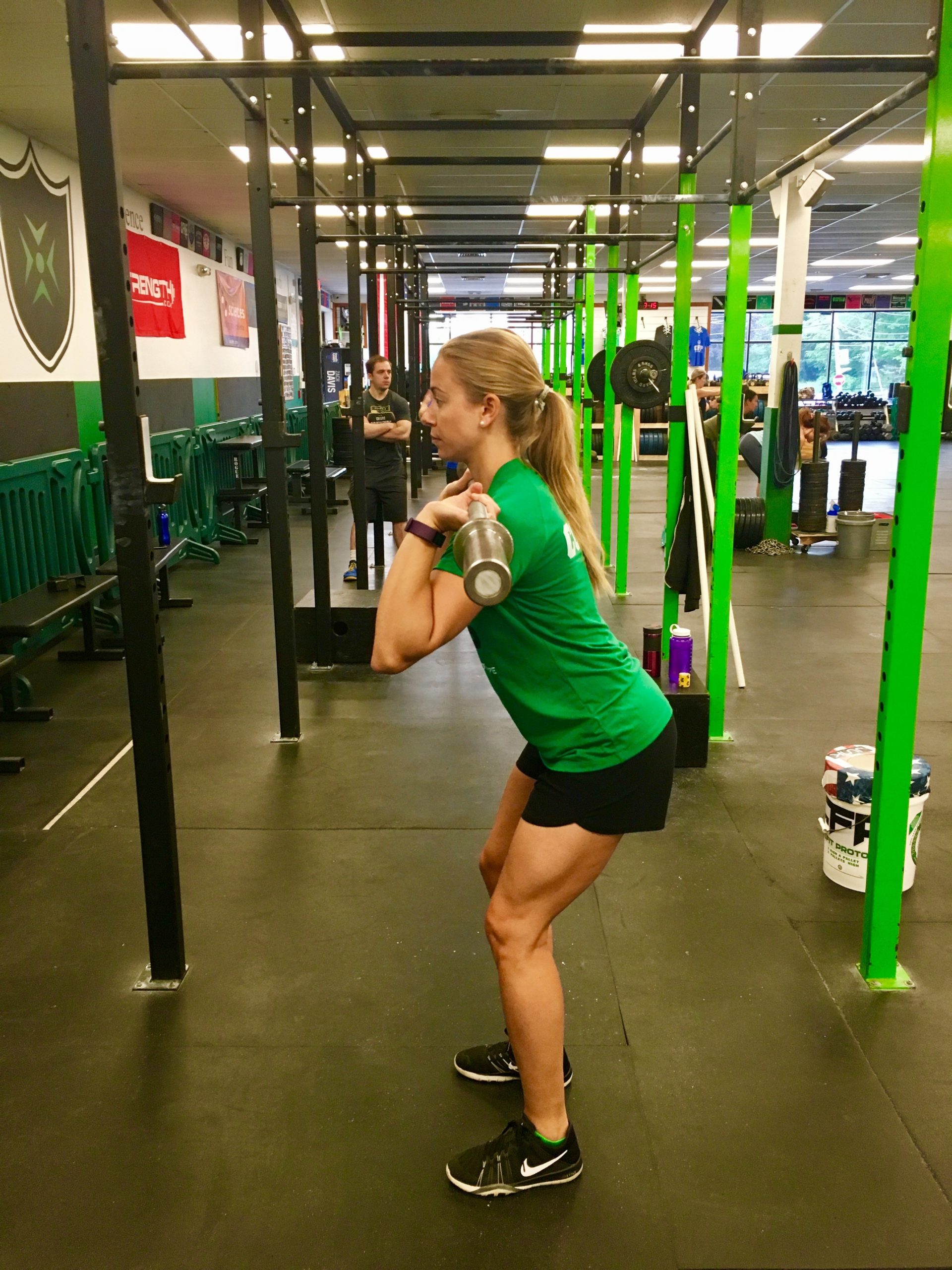
2. Weight transfers to the toes and heels lift off ground
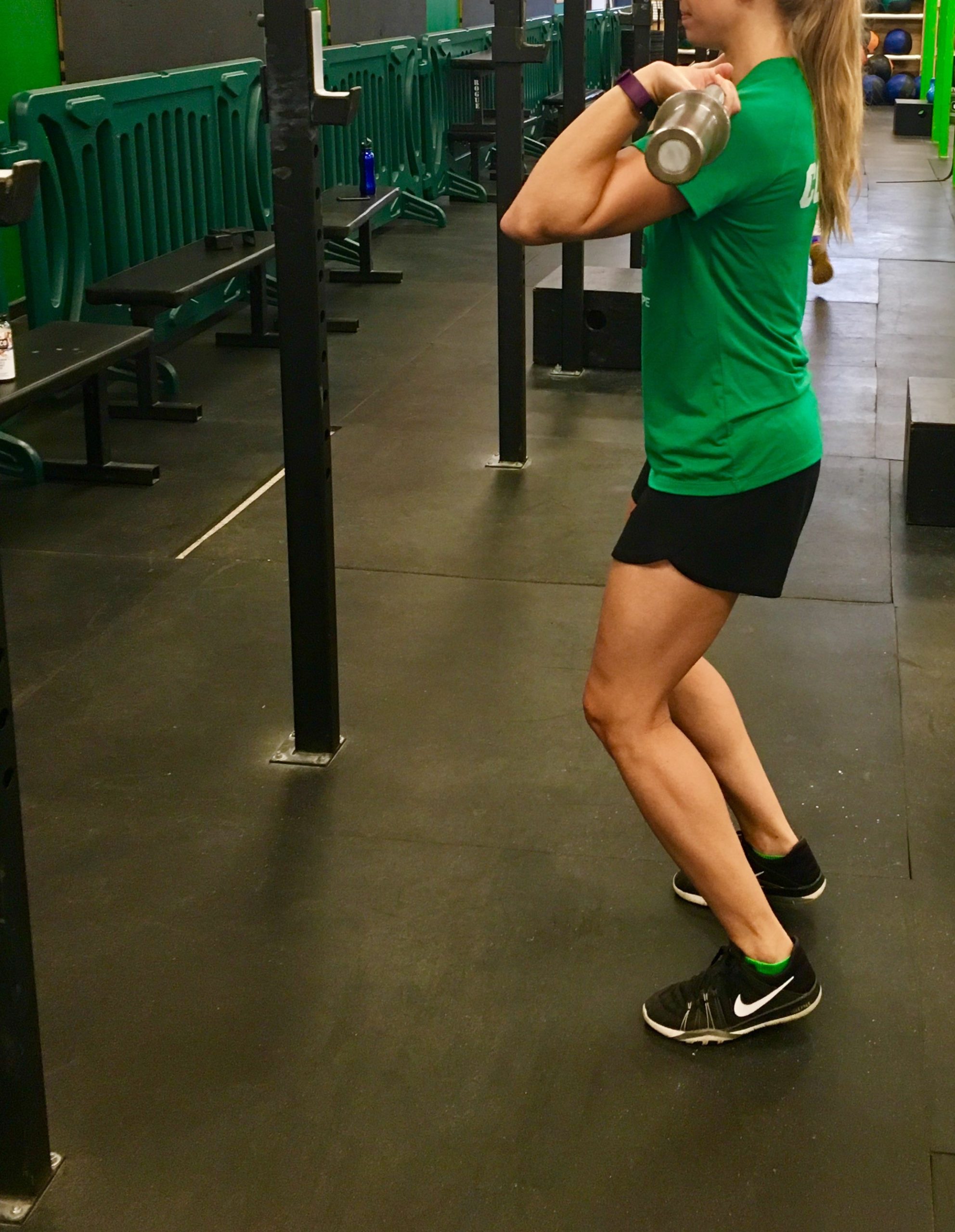
3. Knees are not placed over the toes but instead cave inwards
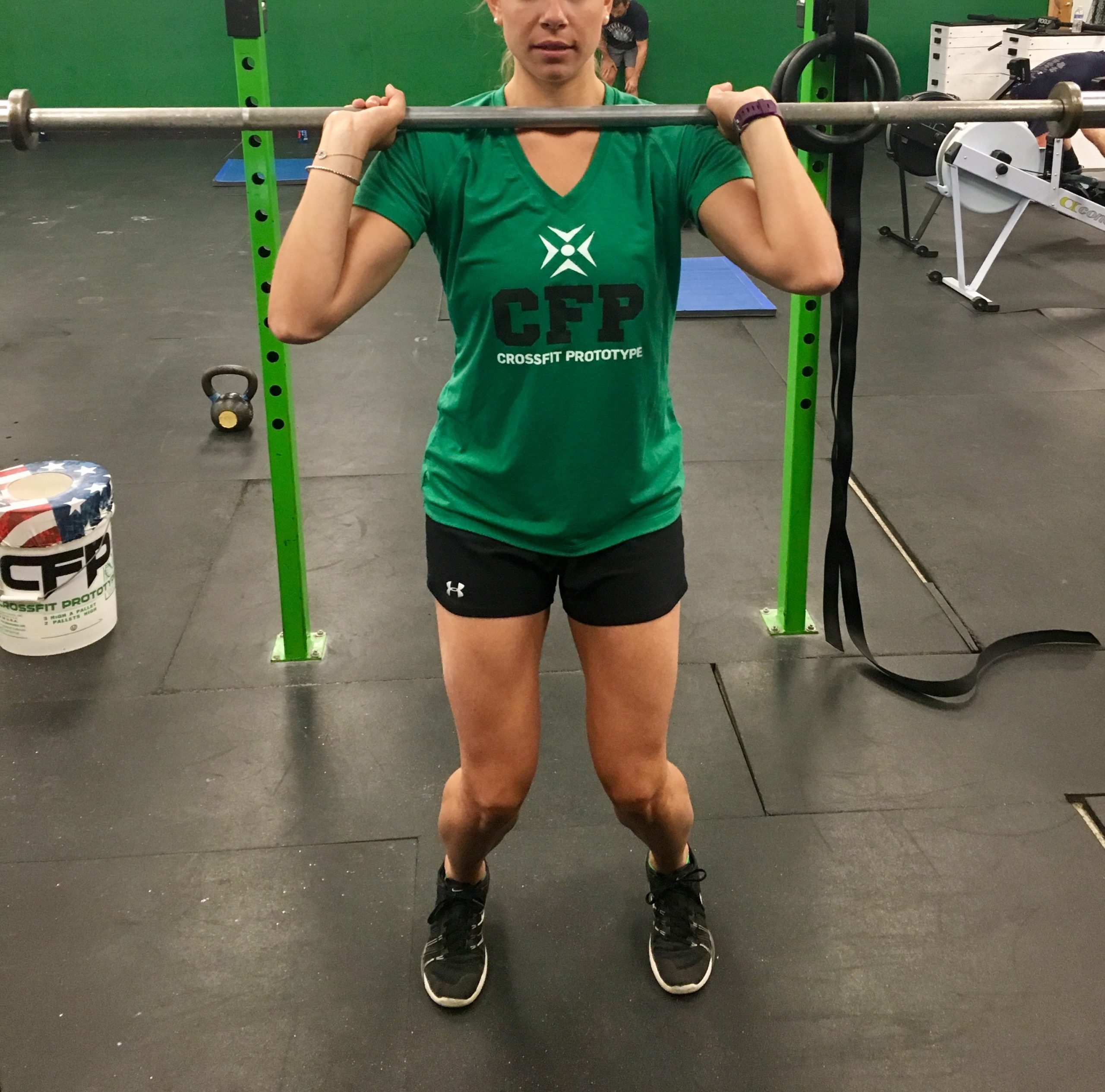
Mobility & Stability Exercises to Improve the Push Press
It is critical to increase mobility before building strength. In other words, let’s say someone does not have efficient mobility in the shoulders, and is not able to get the bar close to their ears when push pressing overhead. Well, continuously pressing a heavy load overhead would be building strength on top of inefficient patterning. So why not first tackle efficient patterning before loading on heavy weight?
If you are someone that struggles with front rack positioning or struggles with getting the bar overhead, here are some mobility and stability accessory exercises that can be added to your gym routine.
Improving Shoulder Mobility
Bench T Spine Mobilization (Front Rack Stretch)
Beginning on all fours, placing elbows onto bench. To start, keep elbows about shoulder width apart and hands on PVC shoulder width apart. Take a deep breath in and sit back to heels as you flex the elbows simultaneously. Goal is to get the PVC to the upper back. When you get to your end range, you will take a deep breath out, and then reset at the top with a breath in and repeat.
Deep Squat Lat Stretch
This is a great upper mobility exercise. Main focus is on inhalation and exhalation during the exercise. Start with feet and knees together, grab onto bar, and sit butt towards heels. Before you sit down, take a deep breath in, as you come down, take a full breath out. Hold the bottom position with full breathing to solidifying anterior pelvic tilt.
Improving Midline Stability
Front Rack Carry with Kettlebells
Looking for the kettlebells to be in a front rack position up to the shoulders, in contact with biceps, forearms, and chest. All you have to do is stand straight up and walk with the kettlebells in close contact to the body. This exercise is challenging the anterior core, so the front side of the core, bracing the midline, and keeping the abs engaged the entire time without changing your posture.
